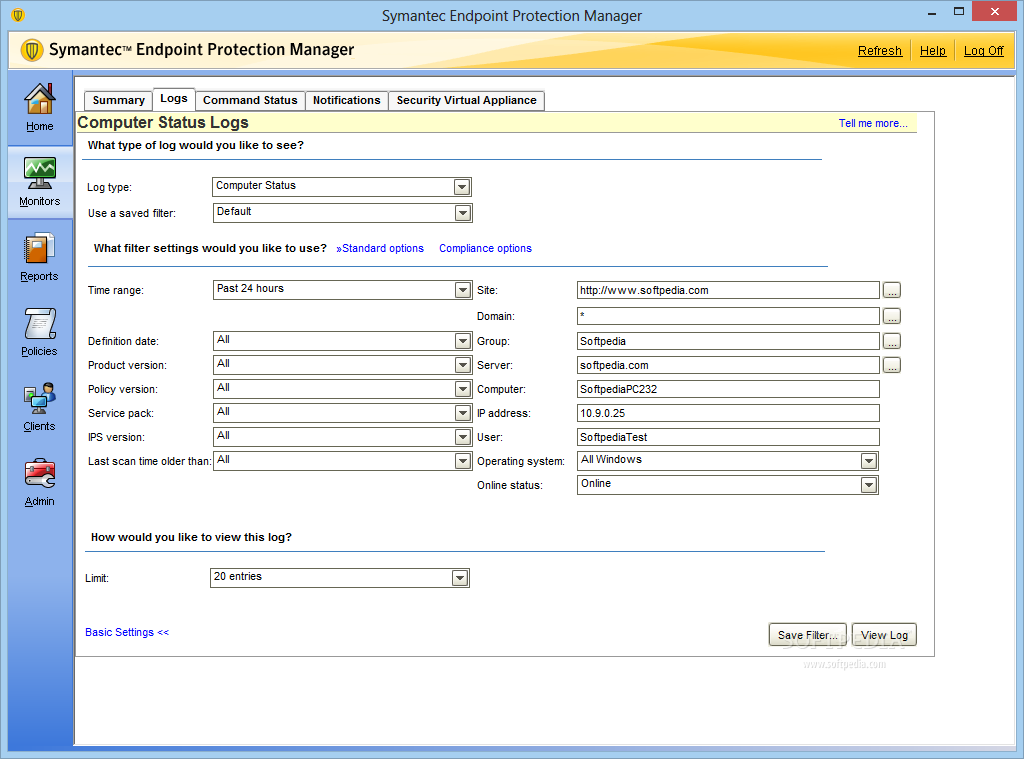
Use this panel to specify how often to push updates from LiveUpdate servers to clients in the groups to which this policy is applied. To ensure that only third-party management tools update client computers, disable the other LiveUpdate server options on this panel. The inbox directory is located at \\Documents and Settings\All Users\Application Data\Symantec\Symantec Endpoint Protection\inbox\. You can then pick up one or more content packages from the content outbox and deliver it to the clients inbox directory.

If you use continuous, the server downloads the latest updates when they are posted.īy default, the updates appear in the Default client groups content outbox, which is organized by content type. Configure the server to download updates on a periodic schedule. This staging server does not require the clients that are connected to it. To use this feature, you must set up a Symantec Endpoint Protection Manager to use as a staging server for content. The Group Update Provider can be in any group.Įnables third-party tools such as Microsoft SMS to provide updates to client computers securely. If the Group Update Provider is offline, the clients contact the management server for updates. The Group Update Provider then updates the rest of the clients in the group. In this scenario, the Group Update Provider downloads the latest updates from the management server. One reason that you might want to create a Group Update Provider is to conserve bandwidth to clients in a remote location over a slow link. Use the Group Update Provider as the default LiveUpdate server Specifies one client in the group to act a proxy LiveUpdate server for the group. If the management server provides named update versions to clients, and the clients have previously downloaded the latest updates from a LiveUpdate server, the clients do not download and install the named (previous) versions.

Typically, do not enable both options unless you have a specific reason. If both options are enabled, clients try to retrieve updates from both sources. You can use and specify multiple internal LiveUpdate servers for failover support. This option is the simplest and requires no configuration other than applying this policy to a group.ĭownloads the updates from either the Default Symantec LiveUpdate server over the Internet, or from an internal LiveUpdate Server. Use the default management server (recommended)ĭownloads the updates from the Symantec Endpoint Protection Manager, and this setting is recommended for most organizations.Table 1: LiveUpdate policy server settings Setting


 0 kommentar(er)
0 kommentar(er)
